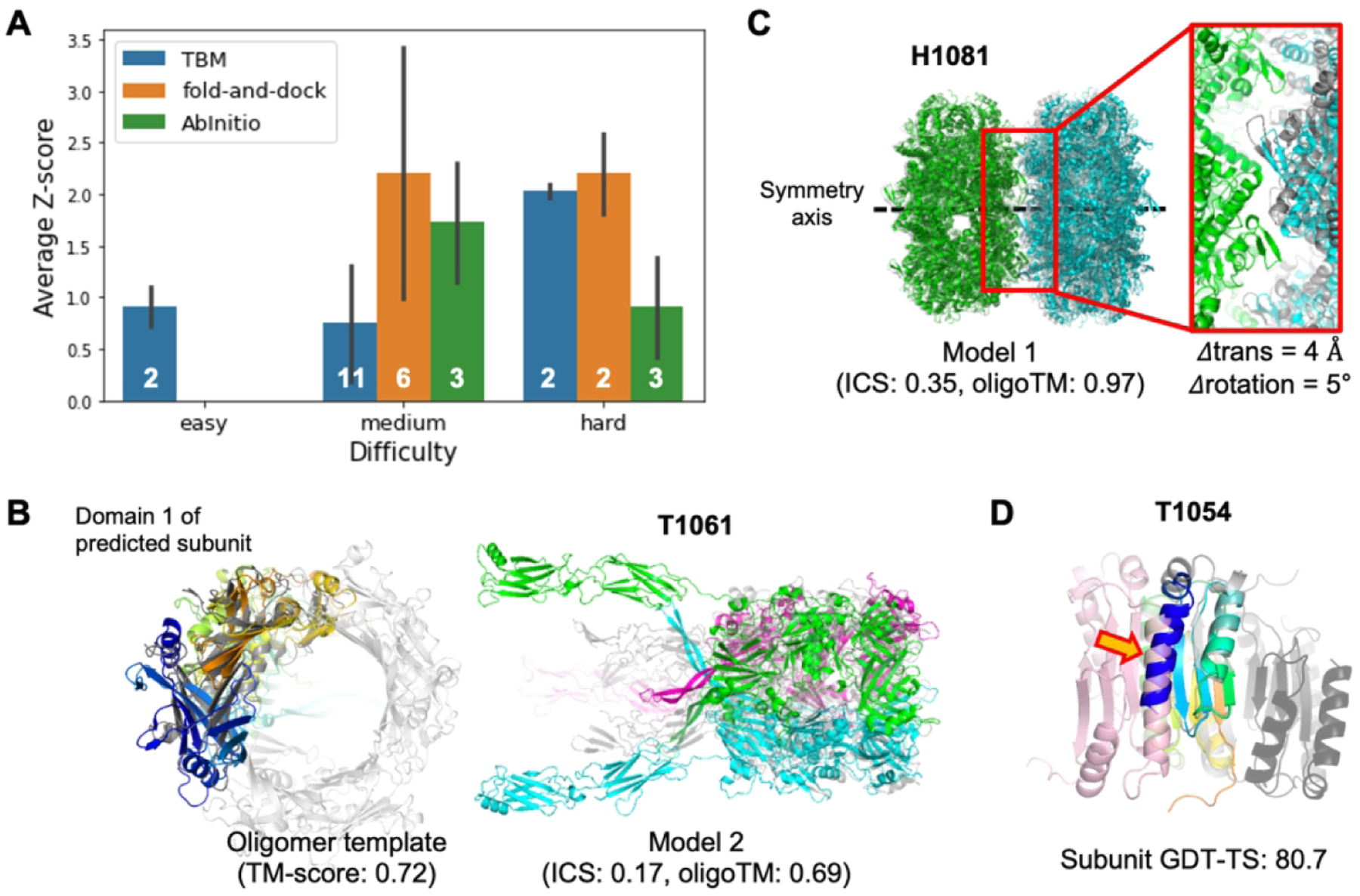Figure 4.

Oligomer modeling performance of BAKER-experimental group. A) The relative performance in terms of average Z-score for the best out of five submissions for each target difficulty and modeling strategy we used. B) A successful example (T1061) of template-based approach by detecting a distant oligomer template based on structural similarity. Left; The subunit structure (colored in rainbow) used to search oligomer templates and the detected template (colored in gray, PDB ID: 3CDD) are shown. Right; The predicted structure (submitted as model 2) is shown with the native structure colored in gray. C) A successful example (H1081) of ab initio docking with a constraint to match symmetry axes of two subunits. The native structure is colored in gray. D) A failed example to generate a correct binding pose by ab initio docking with the subunit structure (colored in rainbow colors from the N-terminus in blue to the C-terminus in red) having high GDT-TS. The problematic N-terminal helix is highlighted by an orange arrow. The correct binding pose is colored in pink while the predicted one is colored in dark gray.
